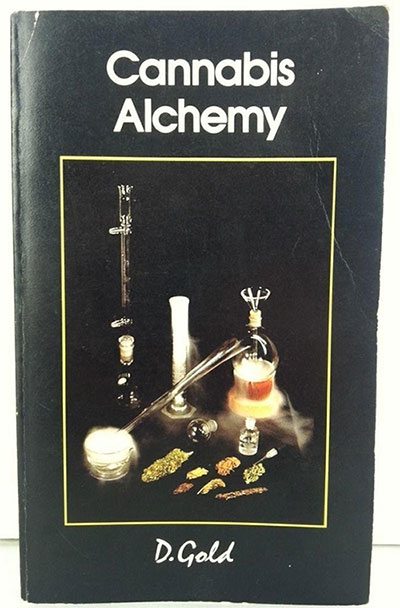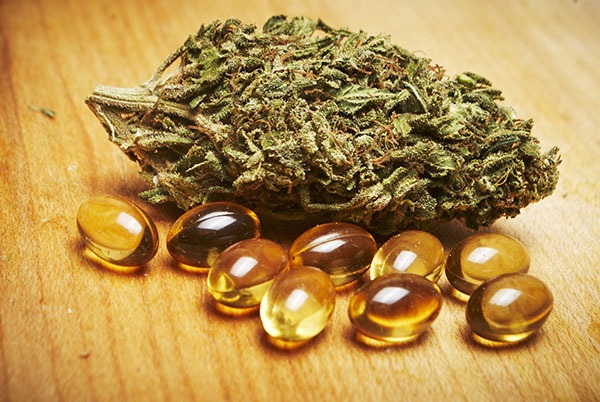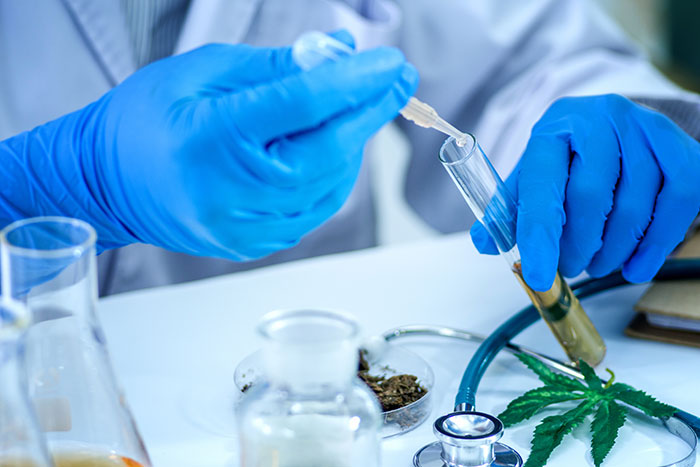In the USA, cannabis has already been legalised in eleven out of fifty states. And in Germany, too, cannabis is already available on prescription for serious medical cases. In the future, highly concentrated substrates of the active ingredient THC could play an important role in the production of medicines.
One option is THC-O-acetate, which is obtained under synthetic conditions. This enjoys a legendary reputation among connoisseurs due to a legendary 300 percent higher potency than ordinary cannabis. The best thing is that a company in the USA has only recently succeeded in bringing THC-O-acetate to market maturity.
In the following article, we want to take a closer look at THC-O-acetate and give more detailed insights into the history, the mode of action and the current background of the highly potent molecule.
What is THC-O-acetate?
In contrast to the normal THC known by its abbreviation, the molecule tetrahydrocannabinol, THC-O-acetate does not exist in its natural form. Rather, THC is the basic product from which THC-O-acetate is then obtained in a complex processing procedure under laboratory conditions. Thus, it is a synthetic product made from the base substance THC.
What may sound strange at first to friends of the cannabis plant, which is valued as a natural product, has a decisive advantage. For example, the chemical composition of the end product is always the same due to the synthetic extraction, which enables an exact dosage of the molecule. This is certainly not the case with naturally occurring THC, as each cannabis variety has different compositions. And even for a single plant, fluctuations in its THC content must always be assumed due to its natural growth. Especially with regard to drugs, the synthetic processing of the natural basic substance may be advantageous.
Conventional tetrahydrocannabinol is mostly smoked or consumed through consumption. The activation of the effect thus takes place through burning or absorption via the stomach mucous membranes. The THC-O-acetate is only activated by the body's own metabolic processes. This makes the THC-O-acetate molecule a so-called metabolic prodrug. The psychoactive psilocybin, for example, also falls into this category. While ordinary cannabis is in principle immediately available for use, THC-O-acetate must first be artificially produced. In addition, it requires special processes in the body to activate it, which go beyond simple absorption via the lungs or stomach mucosa. During these processes, the acetyls bound during the production process are split off again by the body. In return, however, the substrate is an extremely potent extract.
The effect of THC-O-acetate
Because THC-O-acetate needs the body's own metabolic processes to activate, it takes about 30 minutes for the effect to take hold. The effect of ordinary THC in smoked form, on the other hand, often sets in more quickly. Its effect is described as sedating and calming as well as psychologically stimulating.
For THC-O-acetate, it can be assumed that these effects are many times higher. In his book "Marijuana Chemistry: Genetics, Processing, Potency", Michael Stark estimates these effects to be an incredible 300 percent stronger. The effect of pure THC-O-acetate can therefore be regarded as strongly psychoactive. This extends to the psychedelic range, which can also explain the proximity to psylocybin, which is also described as a metabolic prodrug.
We already know psychedelic effects from THC in its natural form, but these do not reach the power of THC-O-acetate by far. If one were to consume THC-O-acetate in the same way and quantity as THC, activities such as concentrated work would certainly no longer be possible. This also applies to a well-rested sleep. Since the human psyche is overly stressed under the influence of a strongly psychedelic substance, sleep is then often impaired and disturbed.
More about the history of THC-O-acetate
THC-O-acetate has been known among researchers since at least the middle of the 19th century.nBetween 1948 and 1975, the "Chemical Crops" a division of the US Army specialising in the defence against chemical, biological and radionuclear weapons experimented with various substances such as LSD and the THC-O-acetate. As part of the "Edgewood Arsenal human experiments", over 7,000 soldiers and 1,000 civilians were tested in Maryland, USA, to see how psycho-chemical substances affect organisms and their performance.
THC-O-acetate was used on dogs. The main finding here was ataxia, i.e. a reduced ability to coordinate muscle functions and the associated movement and body functions. These were two times more impaired in the dogs than with ordinary THC, which literally paralysed the animals.
The US National Drug Administration, the DEA, also reports an unusual incident in Jacksonville, Florida. Here, an individual had managed to manufacture the molecule in private. The authorities caught the man and he was taken into custody. However, the head of the agency at the time, Donald A. Cooper, reports that his agency has not had a sample of the substance since. The DEA thus classified the incident as an isolated event and did not look into the product any further.
A similar case to the one in the USA is also known from Great Britain. Here, a private person had also managed to synthesise the molecule. The local authorities assumed that the man had succeeded after reading D. Gold's book "Cannabis Alchemy".

Do not make it yourself at home.
In this book, which is considered a classic among scene experts and was first published in 1974, the effect of THC-O-acetate is described as "more spiritual and psychedelic than the natural product". This is probably why it is still categorised as a "class A drug" in Great Britain.
This puts THC-O-acetate in the same category as cocaine, heroin or even crack. Possession of the substance can therefore be punished with up to 7 years in prison. If one is caught dealing the substrate, one even faces life imprisonment. The private manufacturer of the molecule was also imprisoned by the English authorities.
How is THC-O-acetate produced?
Since the THC-O-acetate molecule is a synthetically derived product, the production of the molecule in one's own four walls is not recommended under any circumstances. Donald A. Cooper of the US Drug Enforcement Administration (DEA) reports that the process is similar to the extraction of heroin from morphine. However, simply because the Soxhlet extractor is a device used in laboratories, the production process goes far beyond normal home use.
In the Soxhlet extractor, the soluble components of a substance are continuously separated from the solid parts. In the case of heroin, the raw opium extracted from the dried milk sap of the opium poppy is separated from the active ingredient morphine. The concrete chemical process here is probably far beyond the knowledge of the average private person, as the morphine is acetylated at its two hydroxyl groups by acetic anhydride or acetic chloride. In this process, the water contained in the morphine exchanges with an acetyl group. This process is also dangerous for the layman because the acetic anhydride is highly flammable and corrosive. Its effect is therefore very destructive to an environment that does not meet the strict requirements of official laboratories.
Current background on distribution

Also due to the complicated production, the trials during the "Edgewood Arsenal Human Experiments" and the incident in Great Britain were so far isolated cases in which one could hear something of the THC-O-acetate. Reports of experiences rarely if ever reached a wider public. Despite the legendary effect and the relatively good availability of natural cannabis, there were hardly any research results from official science until recently.
However, this has changed in the wake of widespread legalisation in the United States. As cannabis has become a marketable product, licensed manufacturers of cannabis products are currently outbidding each other to bring innovative and increasingly potent products to market.
"Honest Marijuana from Colorado has now succeeded in launching a product based on THC-O-acetate for the US state. The company relies on a patented technology called "nanobidiol" for its production. This means:
- The tetrahydrocannabinol is broken down into almost invisible molecules. These can now only be measured at a nano level. This corresponds to the billionth part of a metre.
- The THC becomes much more water-soluble and can thus be processed almost indefinitely.
- A safer chemical solvent than the highly dangerous acetic anhydride has been found.
As a result, the THC-O-Acetate end product is odourless, tasteless and can be precisely dosed. As a result, says company ace Serge Christov, "THC-O-Acetate will be a game changer for those suffering from anxiety and sleep problems."
The importance of THC-O-acetate for today's cannabis products
Cannabis has long been perceived by the public as more than a mere intoxicant. In Germany, for example, doctors have been allowed to prescribe cannabis flowers to their patients in severe cases since 1 March 2017. This is mainly the case for pain patients and those suffering from severe panic and anxiety.
However, it is certainly not everyone's cup of tea to smoke the flowers and subject oneself to the psyche-stimulating effects. In both cases, a synthetically derived product based on tetrahydrocannabinol can help. This can be put into tablet form, for example. Through medical control and exact dosage possibilities of the molecule, it is also possible to produce a substance that really only works in the desired way. What is already a reality in the USA could thus soon be the case in Germany as well: THC would finally have managed to step out of the muckraking corner of a niche drug only available on the black market. On the contrary, it would be used for therapeutic purposes and made available to a broad public under controlled conditions. Whether THC-O-acetate can be helpful and useful in the future for therapeutic use with certain symptoms and in what dosage remains to be seen and will be the subject of further research.






